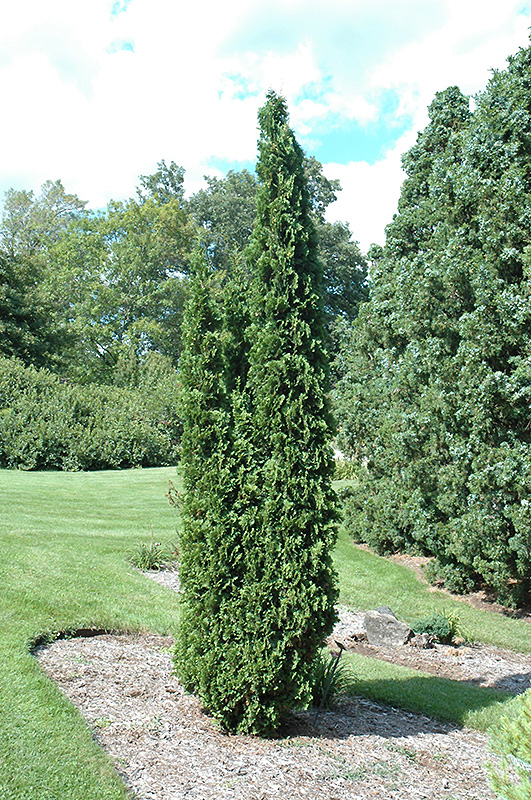Arborvitae, Degroot's Spire Thuja occidentalis 'Degroot's Spire' Height: 20 feet Spacing: 4 feet
Sunlight:
Hardiness Zone: 3b Other Names: Eastern White Cedar Description: A thin spire-like evergreen accent for home landscape use, with a spiraling tendency of growth; a most unique specimen in the hands of inspired gardeners, hardy and adaptable, use as a solitary. Ornamental Features Arborvitae, Degroot's Spire is a dwarf conifer which is primarily valued in the landscape for its rigidly columnar form. It has rich green evergreen foliage. The scale-like sprays of foliage remain green throughout the winter. Landscape Attributes Arborvitae, Degroot's Spire is a dense multi-stemmed evergreen shrub with a narrowly upright and columnar growth habit. Its relatively fine texture sets it apart from other landscape plants with less refined foliage. This is a relatively low maintenance shrub. When pruning is necessary, it is recommended to only trim back the new growth of the current season, other than to remove any dieback. It has no significant negative characteristics. Arborvitae, Degroot's Spire is recommended for the following landscape applications; Planting & Growing Arborvitae, Degroot's Spire will grow to be about 20 feet tall at maturity, with a spread of 5 feet. When grown in masses or used as a bedding plant, individual plants should be spaced approximately 4 feet apart. It has a low canopy with a typical clearance of 1 foot from the ground, and is suitable for planting under power lines. It grows at a slow rate, and under ideal conditions can be expected to live for 50 years or more. This shrub does best in full sun to partial shade. It prefers to grow in average to moist conditions, and shouldn't be allowed to dry out. This plant should be periodically fertilized throughout the active growing season with a specially-formulated acidic fertilizer. It is not particular as to soil type or pH. It is somewhat tolerant of urban pollution, and will benefit from being planted in a relatively sheltered location. Consider applying a thick mulch around the root zone in winter to protect it in exposed locations or colder microclimates. This is a selection of a native North American species. Special Attributes Arborvitae don't do well if they aren't well watered regularly. Evergreens need to be watered during the winter. Our desert climate especially in late winter to early spring evergreens can suffer during next growing season. An easy way to remember check for dryness on the holidays Halloween, Thanksgiving, New Year's Day, Valentines Day & Easter.![]()
![]()
![]()
![]()
![]()
![]()
![]()
![]()
![]()
![]()
![]()
![]()

